Of all the many walks in the South Downs National Park, Kingley vale must stand out as one of the most beautiful and rewarding in terms of views and habitat.
Although within the South Downs national park, the site is managed by Natural England and contains many walking trails through woodland and a nature trail. As you walk through the area you will come to appreciate the rich and diverse heritage of the area, from the remains of Roman temple at Bow Hill, an iron age settlement and the famous “Devil’s Bumps” – round barrows dating from the Bronze age.
But, perhaps, the area is most renowned for the Yew Tree forests. The forest contains yews as much as 2,000 years old, which are some of the oldest living organisms in Great Britain. Which is more impressive, when you consider most yew trees across were felled after the 14th century, to manufacture English longbows.

In 1472, with the increasing popularity of the longbow, the English government enacted a “yew tax” of four “bowestaffs” for every cask of wine unloaded at an English harbour. This sparked a rush for ancient yew trees across Europe, decimating the forests. Kingley Vale is one of the few major stands remaining; most yews elsewhere are solitary trees or small stands.
Other tree species in Kingley Vale include oak, ash, holly and hawthorn. The chalk grassland is home to many flowers and herbs and a large variety of birds are found. The chalk grassland at the top of Kingley vale is home to 39 species of butterfly.
This area is enjoyable at any time of year – spring is alive with bird sound, summer you see the butterflies, autumn gives you amazing colours on the trees. Pick a clear day and the views are stunning from the top – a real panorama over the length of the Downs, English Channel, Isle of Wight and north across Sussex.
So, where to start the walk? There are many places to start from, but my preferred start pint is at the Stoughton Country Car Park about 1-mile NE of the village of Stoughton. The post code for the CP is PO18 9QJ. The walk is a 6-mile circular one, but can be extended significantly, if desired. Just consult the Ordnance Survey map OE 120.
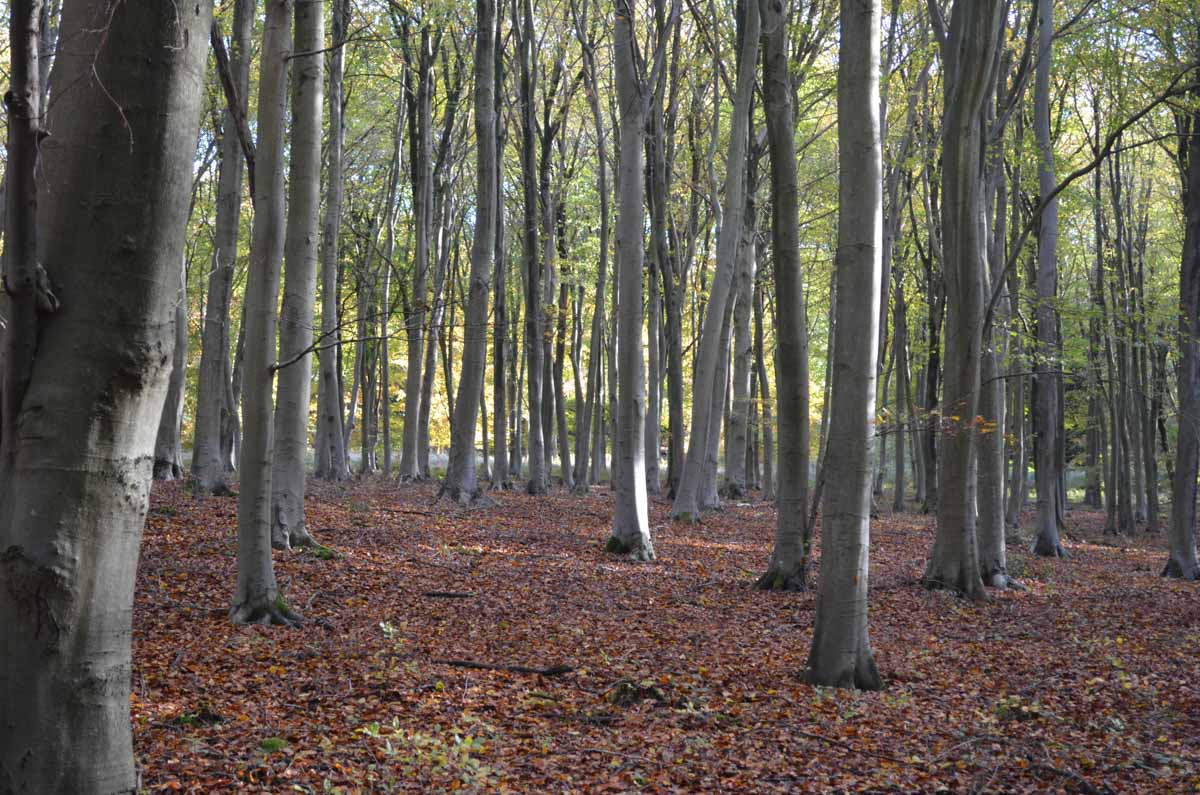
From the car park, follow the well-defined path at the edge of the woods and fields. After 0.5 mile or so follow the right fork and start to climb up through the trees. This area is largely Beech and gives rise to fantastic colour in autumn.
As you crest the hill, it is worth walking to the fence at the edge of the field and enjoy the views down the valley to Stoughton. On a clear day you can see the English Channel beyond Chichester Harbour. It is normal to see Red Kites soaring above the fields. Resume the walk and as the hill flattens look for a path to your left and walk up the hill, here you will start to see the Yew Trees.

You will encounter several large trees creating a “grove”. I always feel the Yews absorb any sound and standing in the grove it becomes eerily quiet. As you crest the hill, you will see a very informative display board detail the trails through the reserve. If you have time, this is a fantastic way to explore the top of Kingley Vale.
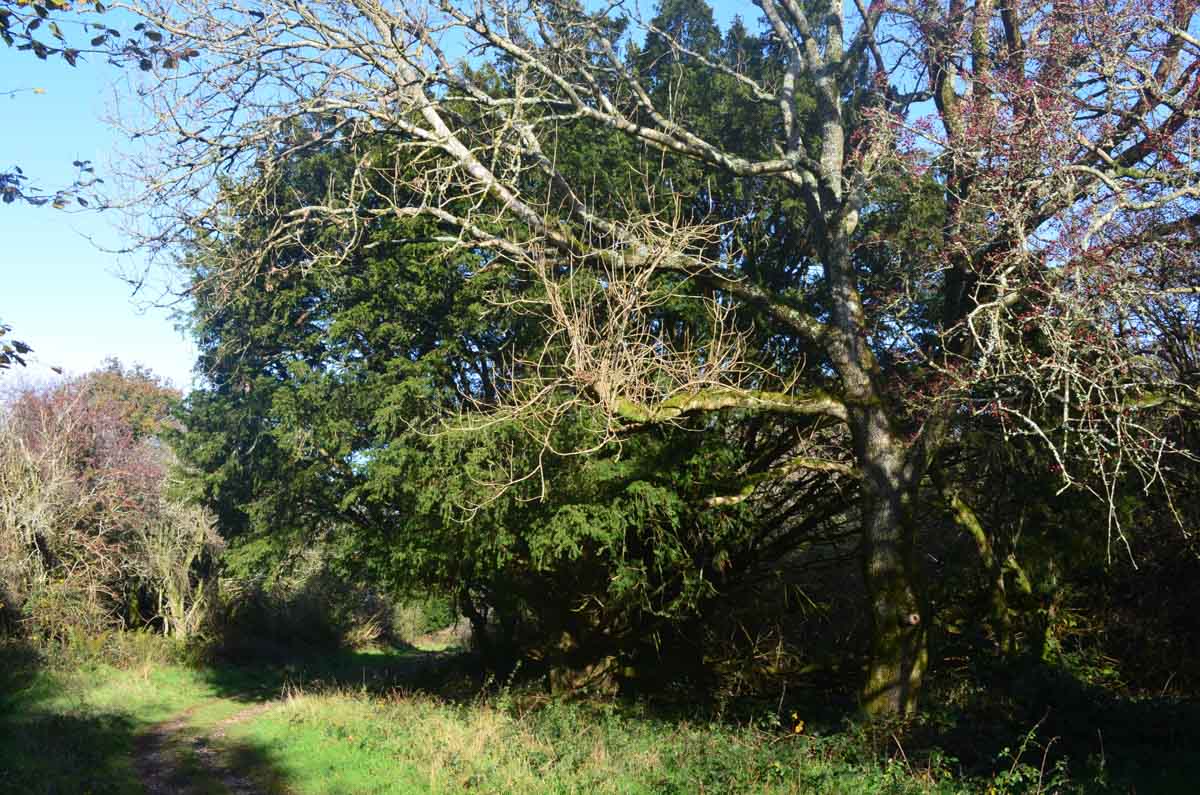
Also, at this point, you get the first of the panoramic views down to the English Channel and east along the coast of Sussex.

Take the right-hand path at the notice board, again taking time to admire the views around you and the splendour of the ancient Yews. You are now at the top of Kingley vale and will come out onto open chalk grass land and an area known as the “Devils Humps”. These are four Bronze Age barrows and if you climb them you get the fantastic panoramic views over the Sussex countryside. On a clear day you will see the white cliffs of Bembridge on the Isle of Wight, the Spinnaker Tower at Portsmouth, Chichester Cathedral and harbour, and north across the downs as far as Blackdown.

Our route now follows the path on the right side of the barrows, but you can follow the left track, this will add a couple of miles to the walk, bringing you out a little south of Stoughton. This part of the walk takes you past more Yew trees and down an avenue of Beech.

Follow the path to a T junction, then turn right and follow the wide path down through more Beech trees, past a memorial to a WW2 Polish fighter pilot who died during the “Battle of Britain”. As you descend you will see impressive views over the downs to the front t of you and north along the fields to the hills you climbed at the start. You will emerge on to a road and turn right, walking through Stoughton. As you pass through the village there is a fine 11th Century Church with a fine chancel arch and 13th Century windows to explore and, should you wish, an extension to this walk of ca 3 miles. There is a signed footpath that takes you the back of Stoughton, to Lye Common and back through In-Holmes wood to the car par.

As you pass through the village you will see a pub called “The Hare and Hounds”, always a nice place to stop for refreshment.
As you pass through the village, keep an eye out for a right-hand entrance to a farm and a signposted footpath. This path is marked as the “Monarchs way”. This is a long-distance footpath, charting the flight of King Charles 2nd after his defeat by Cromwell in the final battle of the English Civil War. The route runs from Worcester to Shoreham-By–Sea. We will follow this section of the path. The path rises gently and leads you back to the hill your first climbed at the start of the walk. There is a bench near the top and its worth taking a rest here and admiring the views.
You now return back to the car park, following the path through the woods.
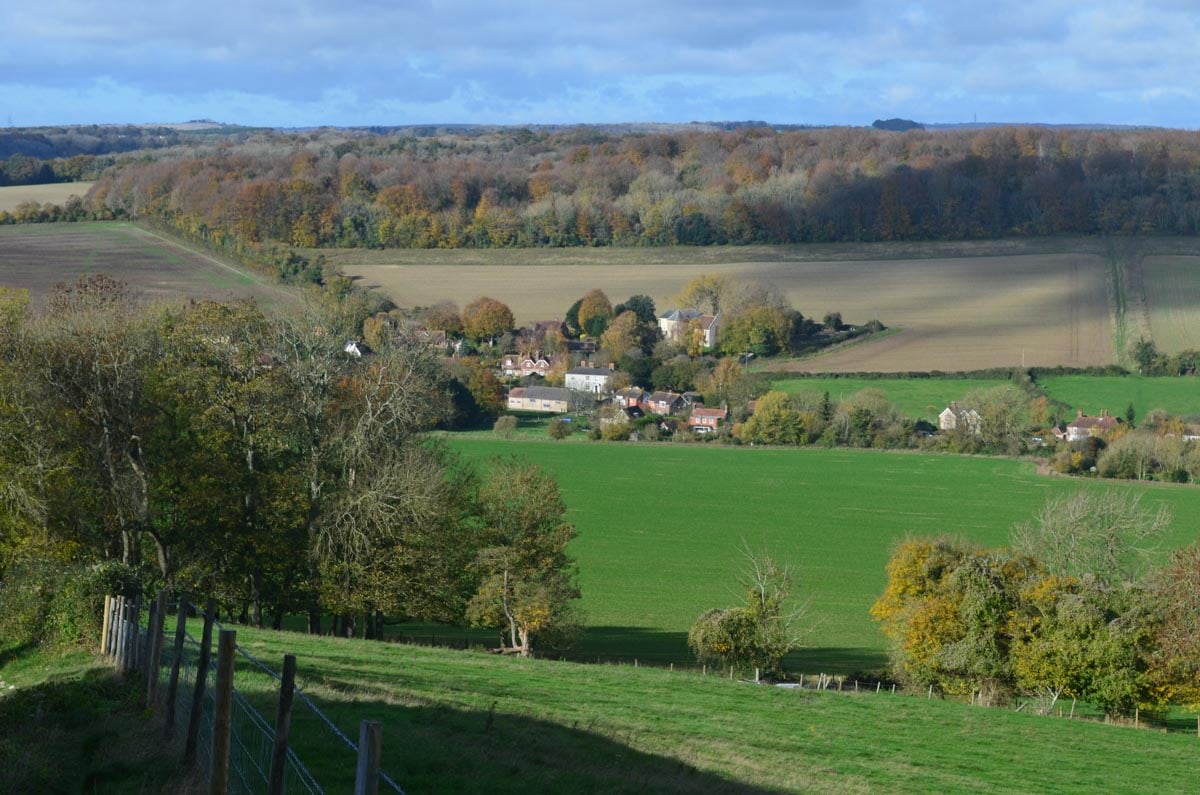
This walk is a genuinely beautiful walk and one I have done many times in all weathers and all seasons. I’ve never been disappointed in the scenery or wildlife I encounter. It really is my “go to” walk, if I’m lacking motivation/inspiration to find a place to go walking.

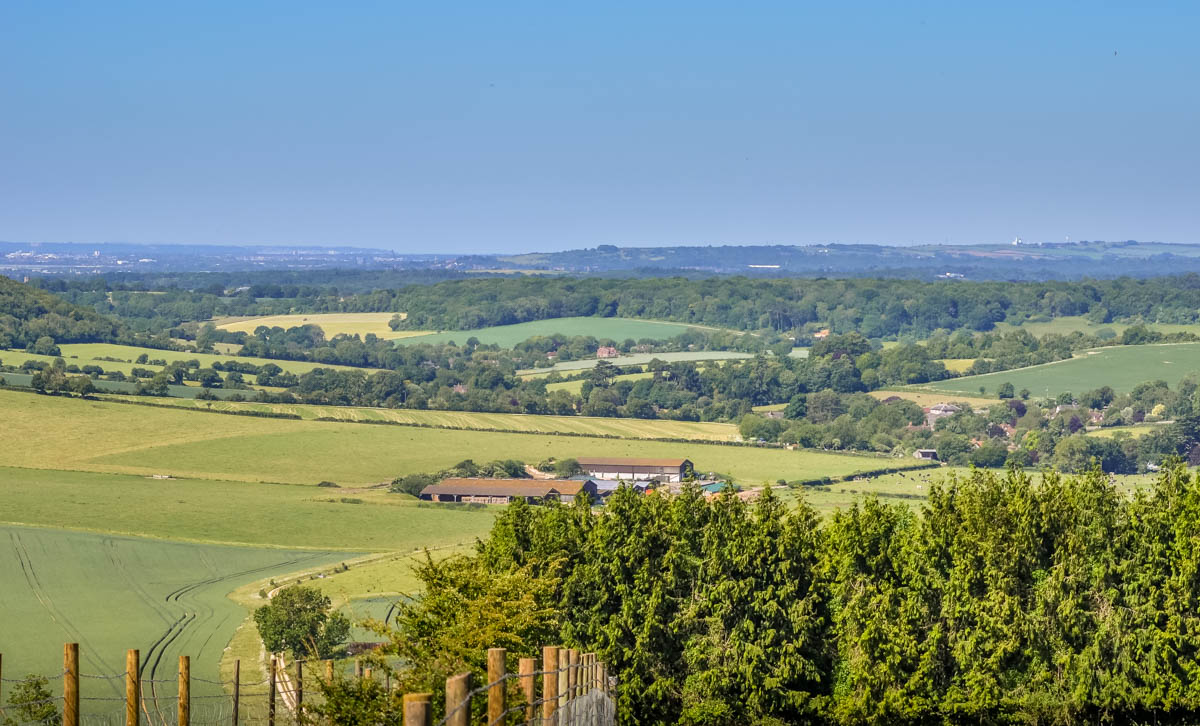




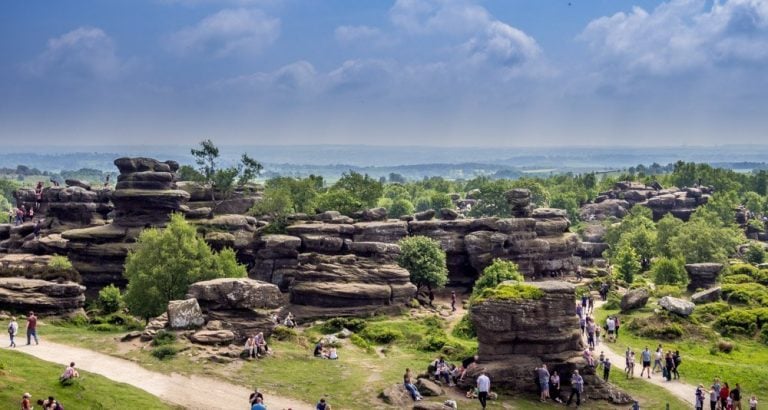


I love your posts. My dream has always been to visit England. I love history and ever since I began tracing my genealogy and finding my ancestors from long ago in Antingham, I would love to spend time there. Thank you for the beautiful pics. J
Thanks, Jackie! I’m glad you are enjoying the blog.
Nice work Mickey!
Thanks!